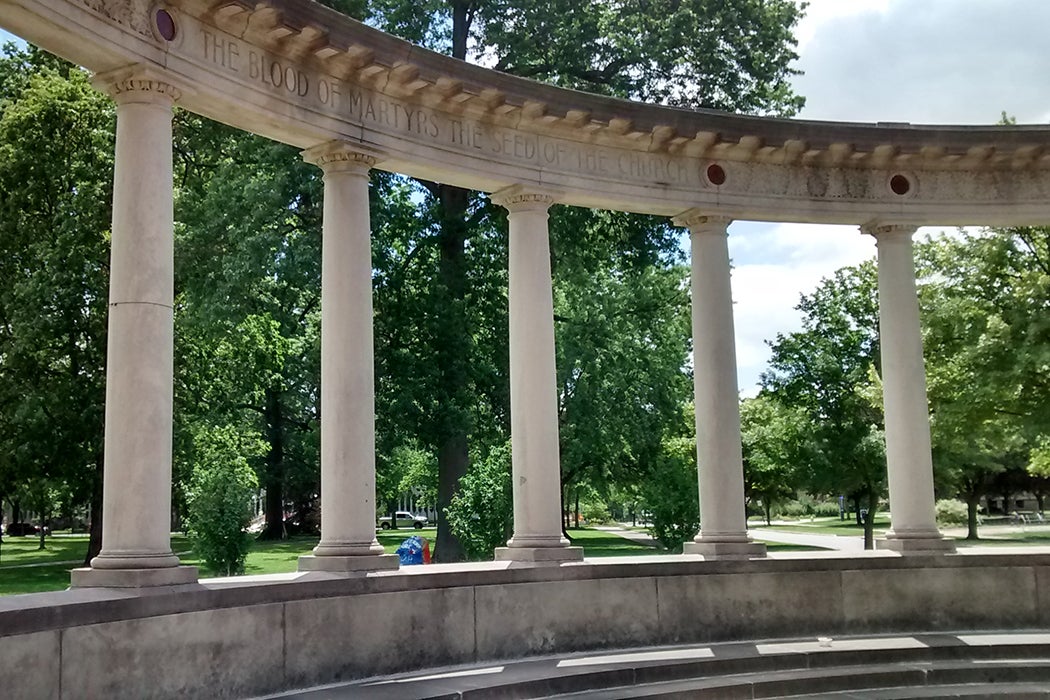Oberlin College is often renowned for being the first co-ed institution of higher education in the United States and the first to admit students “irrespective of color,” starting in 1835. But history, as usual, is more complicated than just that recitation of facts would suggest.
Education historian Cally L. Waite documents the complicated reality in her article “The Segregation of Black Students at Oberlin College after Reconstruction,” and in her book Permission to Remain Among Us: Education for Blacks in Oberlin, Ohio, 1880-1914. Waite writes that two Congregationalist ministers from New England founded Oberlin in 1833 to educate men and women to save what they described as “the dying world.” Inspired by the religious revivalism of what is now called the Second Great Awakening, which reached its peak in the 1830s, Oberlin was characterized by evangelism, abolitionism, and abstemiousness (no meat, alcohol, tea, or coffee). According to Waite, the “colony [was] considered quite strange” by the people in nearby towns.
The commitment to abolitionism led to dropping the color line in 1835. Waite notes that this wasn’t without debate, but that eventually the integrationists won. Notably, during a time when it was illegal to educate African Americans in the South, and even free states like Ohio restricted public education, the community of Oberlin also integrated its public schools in defiance of state “Black Laws.”
Antebellum Oberlin was a major center of black education, even though black students made up less than 5% of the student body before the Civil War. Nonetheless, the 136 males and 141 females who attended from 1835-1863 (some as part of the non-degree granting preparatory department, a then-standard component of colleges) were influential beyond their small numbers. Most went into education, and many went south to teach during and after the Civil War.
Postbellum, the story changes, as it does for the nation at large. As Waite details, discrimination and segregation spread within the former stronghold of abolitionism, paralleling national sentiment and law. A major factor was the shift in attitudes of a new generation of northern whites raised in the ideology of white supremacy. The last twenty years of the nineteenth century were “the nadir of race relations for blacks,” with the terrorism of lynching and race riots, and the codification of Jim Crow segregation. This culminated in the Supreme Court’s 1896 Plessy v. Ferguson decision legitimizing discrimination by allowing for “separate but equal” facilities, which in practice were never equal.
Want more stories like this one?
Waite points to additional factors. The growing independence of black communities around the nation, with more and more black colleges and black churches, filled the void created by the separationism of white supremacy. Institutionally, the latter part of the nineteenth century also saw the rise of the university: small colleges had to change to compete. Oberlin abandoned the religious utopianism of its founding, and, in secularizing, left its religiously-inspired commitment to black students by the wayside.
Reflecting national trends after the abandonment of Reconstruction, Oberlin began to segregate, losing its leadership role as an example of half a century of integration. In 1882, after half a century of integrated dining at Oberlin, white students refused to eat with their black classmates. A separate table was instituted for black students. Like the original decision to admit black students, this was not without controversy. The decision was reversed, but segregation prevailed in off-campus housing.
Waite writes that one could argue “Oberlin was a product of the times.” But she believes “such arguments remain incomplete” since the school had its “own widespread sphere of influence.” Wielding such power, she considers the college’s metamorphosis from Underground Railroad bastion to segregated school a transformation of national importance.







